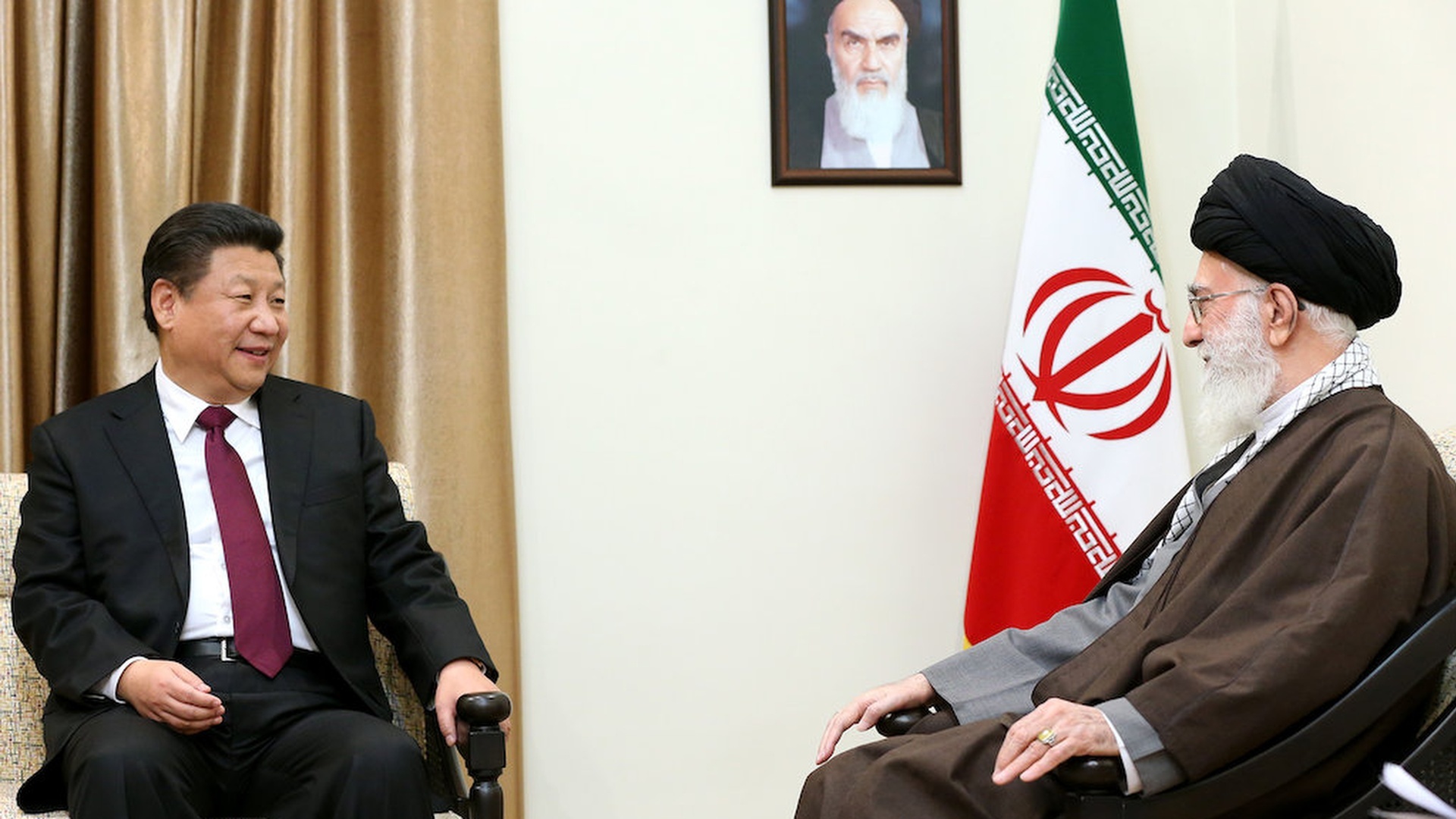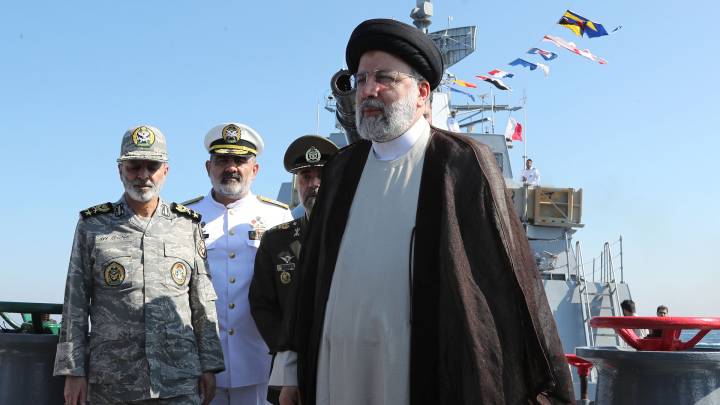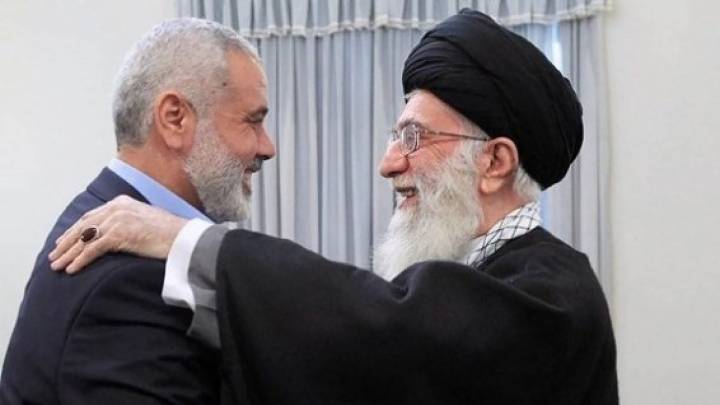Iran and China seek to deepen their ties. A move that flaunts the two countries’ willingness to back each other against the US pressure. Looking closer, a long-term overarching relation might be much harder to establish.
“My father was a proud fisherman, but I am not.” After generations, Yusof is the first man to abandon fishing. It wasn’t his choice. “There is no fish to catch. Chinese vessels scope out everything.” The 45-year-old said to zenith on a phone call.
Yusof lost his small business five years ago, when the Chinese started fishing around the Iranian coasts of the Gulf of Oman and came close to his small village port around Jask port. The Chinese vessels allegedly use illegal fishing methods, destroying the region’s marine life. Local fishermen, like Yusof, cried out but were powerless against them. When their grievances made the rounds in social media in August 2018, Iranian officials had to come clear: They had trusted the sea to Chinese fishing companies.
This was not the only case of the Iranian government signing a deal with China without consulting lawmakers or considering the public reaction. The two countries have developed ever closer ties over the last years. But the efforts of Iran and China to strengthen their ties through a long-term strategic pact put them into the spotlight earlier in July, within and outside of the country. Domestically, it faced widespread vocal dissent. On the international level, the West perceived it as an alarming prospect.
What does the deal entail and why is it problematic?
For Iran’s decision-makers, expanding relations with China has been on table for a number of years. In January 2016, China’s president Xi Jinping and Iran’s Supreme Leader Ali Khamenei had negotiated a closer partnership. Their meeting took place right after the finalisation of the Iran nuclear deal (JCPOA), when both countries had better relationships with the United States.
Now that the current US administration relentlessly seeks to isolate them, they both have better reasons to bolster their partnership. Iran is suffering draconian sanctions and Beijing is entangled in an intense trade-war with the US. Tehran and Beijing both want to show that by working together, they can undermine the Trump administration’s push to corner them.
Iran’s economy is floundering. Since the US re-imposed and intensified the sanctions two years ago, the country’s economy shrank more than 10%, IMF measurements show. Then came the Coronavirus pandemic and hit Iran the worst in the MENA region.
The EUI, the research and analysis division of The Economist magazine, “is forecasting a 12% real GDP contraction [in Iran] in 2020, compounding the deep recession experienced last year,” says Pat Thaker, the EUI’s Editorial Director of MENA region when contacted by zenith.
Trump’s unilateral withdrawal from the Iran deal blocked Europe’s trade routes. The Iranian government has no other choice but to turn east and start a journey on a bumpy road and out of isolation.
A summary of the deal that Iran’s presidency has published recently, sketches China’s involvement in Iran’s banking, telecommunications, ports, and railways. If implemented, such partnership, would give Iran a chance to refurbish its sanction-stricken infrastructure and boost its economy. In return, China would receive oil at a discount rate. But there are other reasons why the Asian superpower might be interested in getting involved more closely.
For China, more important than the oil price, is the possibility to diversify its energy sources. “China will be able to meet some of its energy needs away from Saudi Arabia and other Gulf members and broaden its sources,” says Thaker.
But China has already been involved in Iran’s energy and infrastructure market and boasts a bigger presence than any other country. Beijing is Tehran’s largest trading partner, with bilateral exchanges totalling some USD 20bn in 2019 and USD 35bn in 2018. Reports by shipment and cargo trackers suggest that Iran illicitly exports its crude oil to China twice the official declared amount, despite the US attempts at decimating oil exports. Sanctions did not stop China’s involvement in Iran’s infrastructure sector either.
Pat Thaker says that while other foreign firms wanting to do business with Iran would face financing difficulties due to US restrictions, China created ways to keep some of its ongoing projects with Iran running. Thaker mentions how “a reopened credit line enabled China Railway Engineering Corporation, a government company, to proceed with a contract….to build the Tehran-Qom-Isfahan high-speed railway. And, in August, an agreement was finalised with China National Machinery Import and Export Corporation, another parastatal, to electrify the Tehran-Mashhad line, likewise utilising a newly-opened line of credit.”
If China is the sole actor on the Iranian Market, why do Tehran and Beijing look for deeper links?
What makes the proposed strategic deal important is its place in the context of China’s Belt and Road Initiative (BRI), also referred to as the New Silk Road, BRI is China’s global infrastructure development strategy. It aims to develop the construction of a trans-continental passage that links China with South East Asia, South Asia, Central Asia, Russia and Europe by land.
Iran’s proposed pact will help China to create a corridor across the Middle East to Europe. Since the US-led blockades prevent any other firm from getting involved, by doing so, China will realize a key part of BRI without having to deal with any competitor.
A clear indicator of such an imbalance is how China acquired the concession to build and operate the strategically important Chabahar port project. Before that, India, a Western ally, was Iran’s partner in the development project of the port. Through Chabahar, India was planning to bypass Pakistan and create an alternative shipping route. But with the re-imposition of sanctions, Indian companies’ progress slowed down.
In early July 2020, in order to intensify its relationship with China, Iran removed India from the project and brought in China. Already controlling the development of Gwadar port in Pakistan, China now has the chance to connect it to Chabahar Port in south-eastern Iran, creating a critical hub within the BRI infrastructure framework.
Even though Iran has gone out of its way to offer incentives to China, there is reason to believe that the proposed pact will not produce the outcomes that Iran wants.
How much can Tehran garner from its lopsided relationship with Beijing?
The details of the pact have yet to be clarified. But it is already clear that Iran is approaching China from an inferior position. The country is giving China unprecedented influence over its resources in hope of an economic lifeline. Still, whether Iran gets what it wants from such a lopsided relationship with China is questionable.
Amid the tensions with the US, China has evidently regulated its trade with Iran to avoid risking losses in the larger US market. After sanctions forced French oil and gas company Total to leave its projects in the South Pars gas field, China National Petroleum Corporation followed suit. At times, Iranian officials have been complaining about late or faulty delivery of committed services by their Chinese partners, but have no better option at their disposal.
Iran is hoping that the recent mounting tensions between Washington and Beijing will motivate the Asian power to increase its engagement. But as Thaker notifies: “that [hope] may not last beyond year-end should Donald Trump, the US president, fail to win re-election in November and his successor adopt a more conciliatory approach towards the country’s rival in Asia.”
Beijing’s most important trade partner in the Middle East happens to be Iran’s regional rivals, Saudi Arabia, and the UAE. Saudi Arabia’ trade volume with China is much larger than with the Kingdom’s close ally, the United States, adding another layer of complexity to the Sino-Iranian relations. “The centrality of energy security to Chinese foreign policy also induces a degree of unwillingness to alienate other Gulf suppliers – chiefly Saudi Arabia – by aligning overly closely with the Kingdom’s nemesis,” says Pat Thaker.
These are the main reasons why a number of observers think that a full-fledged strategic alliance is unlikely to materialise, despite deepening ties in energy and infrastructure development. And with nation-wide protests happening once in a couple of years in Iran, China is unlikely to commit to a fully-fledged partnership with the Islamic Republic.
Why many Iranians associate trade with China with the decline of domestic businesses and industries
Inside Iran, the proposed partnership pact has been facing strong resistance, too.
During the past few months, the Iranian government has been challenged by disruptive episodes of public unrest. Seeking an inferior accord with China will demonstrate a major turnaround from the revolutionary values that the state claims to stand for. Promising independence and sustainability, the Islamic republic has asked its population to endure economic harshness and sanctions for decades. During times when public trust in government is in short supply, extravagant generosity with China has evoked uproar throughout society.
Conservative media outlets were quick to defend the deal’s draft. On 25th of June, Javan daily headlined “The Lion and Dragon Pact” and wrote: “China’s oriental culture is closer to ours so this proximity will help our partnership”. On July 12th, the political Op-Ed section of Resalat daily commented: “The Partnership pact with China is being criticized by our domestic occidentalists...the ones who claimed to know the language of communication with the international community... and have wasted our country’s resources and opportunities ...through the flimsy, non-functional [Nuclear] deal.”
Down on the same page, political strategist Reza Azizi advised Iranian policy-makers against looking at China the same way they look at the West: “Despite being a superpower, China has never been anything beyond the world’s factory….In fact, China does not have the necessary soft power to dominate the world’s civilization and produce discourse for it.”
But the public discourse seems to perceive China as more of a future patron than partner. Iranian critics of the deal doubt that China will allow Iran to pursue the policies that put the country into conflict with its neighbouring rivals.
China’s backing of autocratic regimes is another point of concern for a group of Iranians.
“Has China not backed the North Korean regime, where the most exploited population on Earth lives? Has China not tried to subordinate other nations at any point in history?” asks Mehdi Motaharnia, a Tehran University professor in Strategic Studies in an interview with Ilna news agency.
A large part of the Iranian public suspects that the Chinese investment will ultimately serve the survival of the ruling elite rather than changing the lives of regular Iranians. Trade with China, for many Iranians has been associated with the decline of domestic businesses and industries. Iranians such as Yusof, the former fisher who now has resorted to smuggling to survive. “I have to risk my life trespassing the borders to earn a few bucks by trading Iranian gasoline for Chinese goods; while the Chinese do the fishing instead of me.”




